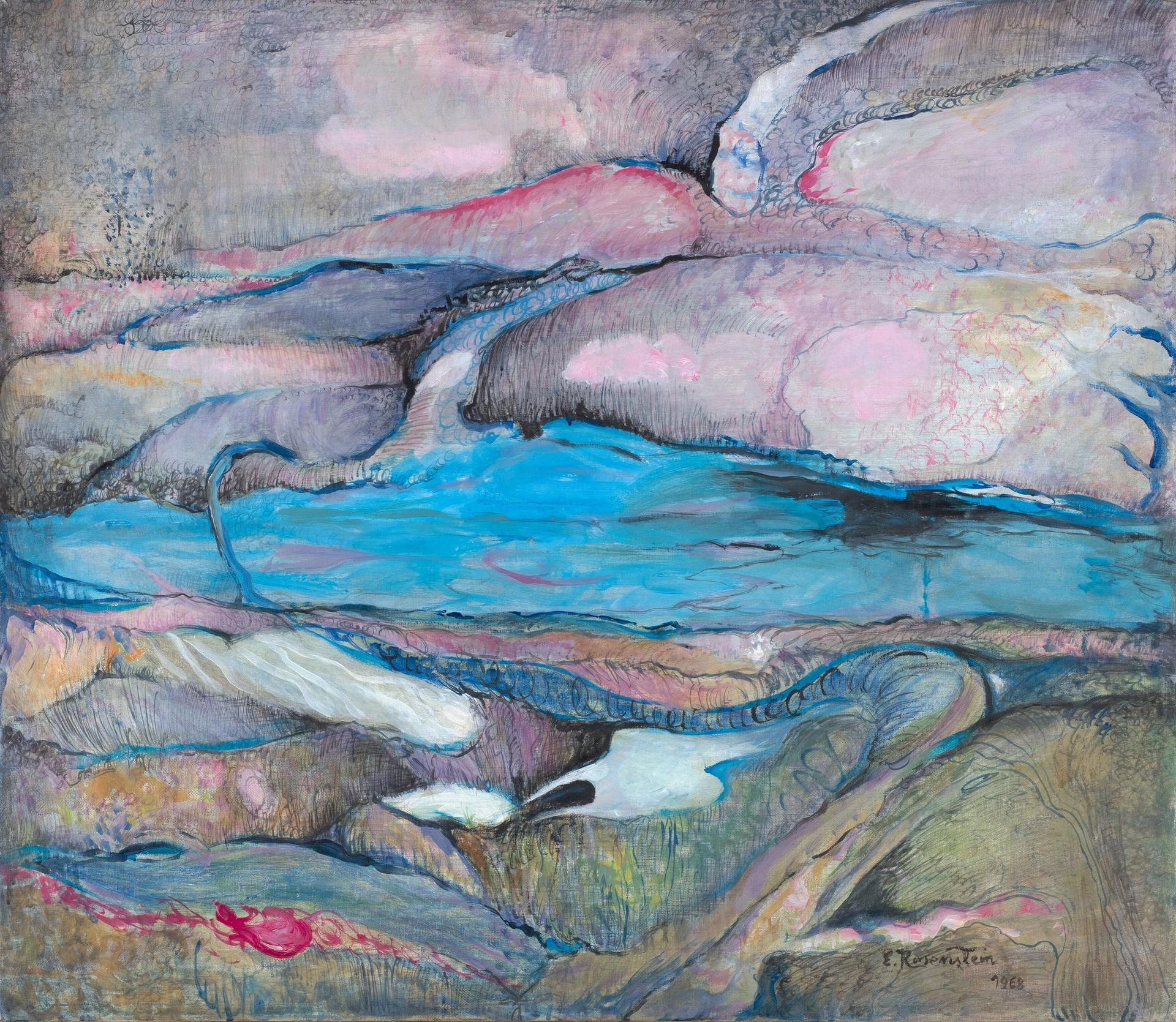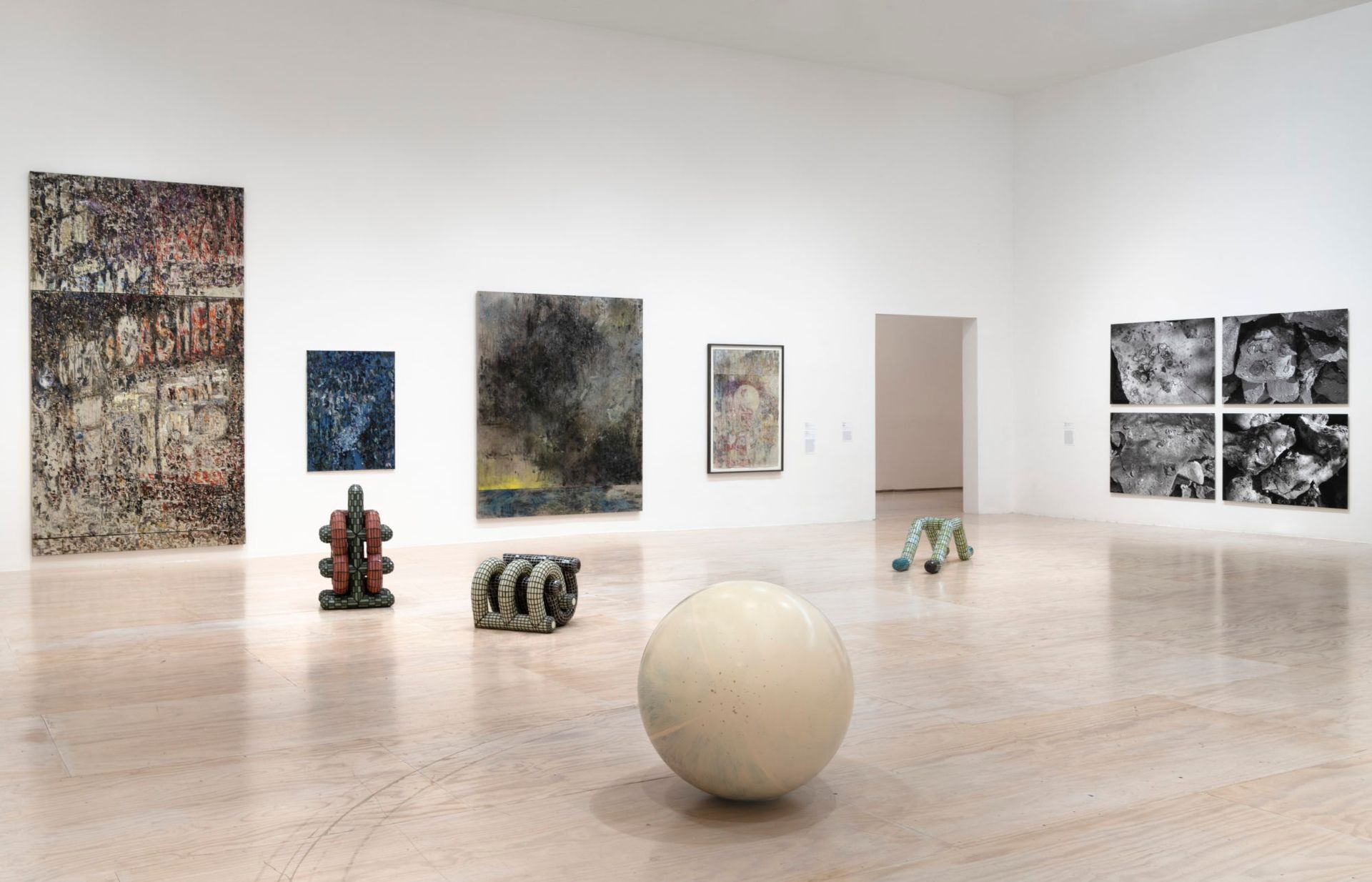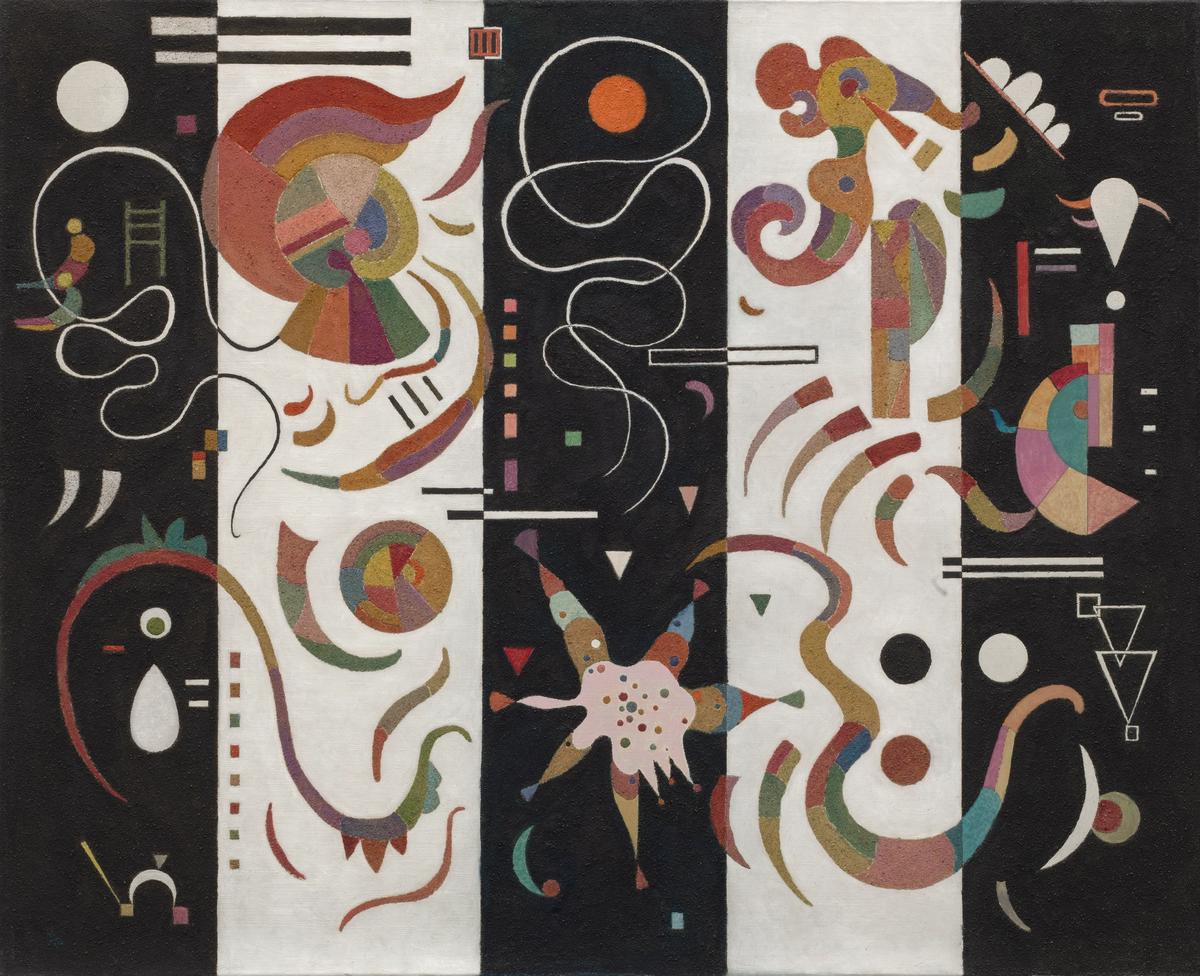Vasily Kandinsky: Around the Circle
Until 5 September 2022 at the Solomon R. Guggenheim Museum, 1071 Fifth Avenue, Manhattan
The most comprehensive retrospective dedicated to the Russian painter Vasily Kandinsky (1866-1944) to date includes more than 80 works presented in chronological order in the Guggenheim’s rotunda—either going forward in time or backwards, depending on how you prefer to walk along the museum’s spiral. Some of the final paintings Kandinsky made in France start at the bottom of the ramp, ascending to his earliest works made in Munich. Sections of the show explore different chapters of the artist’s life, from his teaching at the Bauhaus in the early 1920s to his various relocations across Europe amid political turmoil. There is a strong focus on the artist’s spiritual and philosophical interests, anchored by his 1911 text Concerning the Spiritual in Art, in which Kandinsky deliberates his argument for Abstract art, urging artists to “renounce the object altogether” and create work that causes a “vibration in the human soul”.

Poświata (Afterglow) (1968). Photo: Marek Gardulski. © The Estate of Erna Rosenstein/Adam Sandauer. Courtesy Hauser & Wirth and Foksal Gallery Foundation
Erna Rosenstein: Once Upon a Time
Until 23 December at Hauser & Wirth, 32 East 69th Street, Manhattan
The late Surrealist artist Erna Rosenstein (1913-2004) was a pivotal figure of the Polish avant-garde but remains little-known outside of Eastern Europe. The first monographic exhibition devoted to her work in the US presents more than 40 paintings, drawings, sculptures and writings that oscillate between magic realism and more pragmatic themes, from ethereal landscapes to poignant works that reflect on the Holocaust, during which she witnessed the murder of her own parents by the German army. Although none of Rosenstein’s pre-war works survive, the traumas she endured in that era would haunt her work for a lifetime. It is referenced in several evocative pieces in the exhibition, including Świt (Portret Ojca) (Dawn) (Portrait of the Artist's Father) (1979), which shows her father’s head hauntingly decapitated from his body. Even vibrant, sinuous paintings like Poświata (Afterglow) (1968) seem to imply something sinister lurking beneath a fragile surface.

Installation view of Greater New York 2021 on view at MoMA PS1. Photo: Martin Seck. Courtesy MoMA PS1.
Greater New York 2021
Until 18 April 2022 at MoMA PS1, 22-25 Jackson Avenue, Queens
The museum’s fifth quinquennial survey of artists living and working in the New York City area, which was postponed one year due to the pandemic, includes more than 100 works by nearly 50 artists and collectives. Past and present politics and the effects of colonisation are overarching themes in the exhibition, visible in works like G. Peter Jemison’s (Seneca) Real Indian Land Claims (2000)—a double-sided collage on a paper bag that references land claim disputes in central New York in the 1980s. The work depicts an Indigenous man being arrested and, on the verso, Klansmen holding anti-Native signs that were found in the area. These weightier works are dispersed—at times—with some more esoteric pieces by several artists who remain under-celebrated, like the late painter Paulina Peavy. Often likened to Hilma af Klint, the deeply spiritual artist painted hypnotisingly kaleidoscopic compositions. She claimed to have met a UFO named Lacamo while participating in a séance in California in 1932, whom she channeled while painting. Peavy said she painted with a brush that “moved on its own”.


